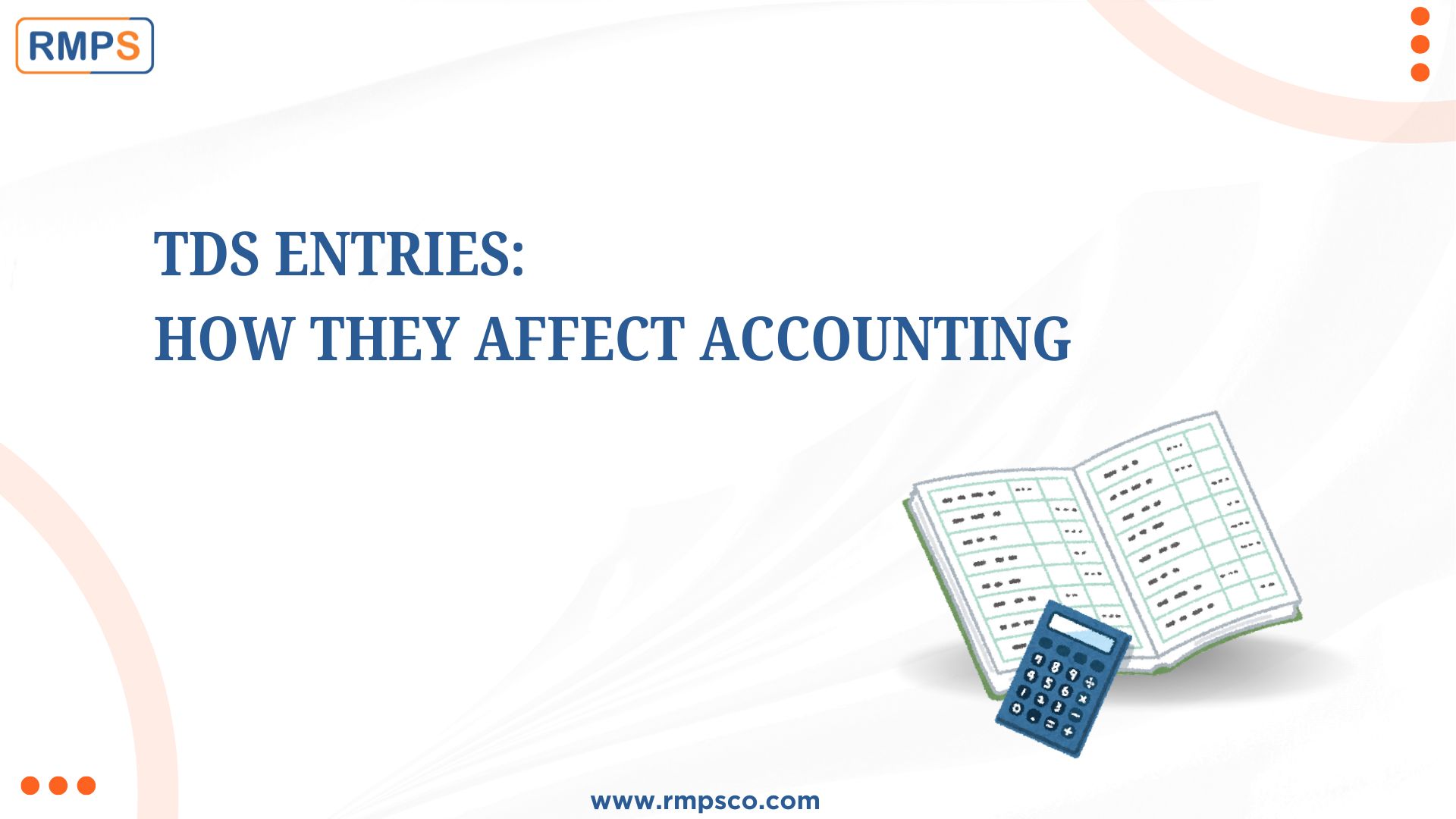
Tax Deducted at Source (TDS) is a vital component of the Indian tax system. Understanding TDS is essential for businesses and accountants because it impacts cash flow, compliance with tax laws, and the accuracy of financial records. This blog will explain what TDS is, its importance, how it affects accounting practices, and how to manage TDS entries—both TDS Receivable and TDS Payable.
What is TDS?
TDS is a method used by the government to collect income tax at the source of income. When a business makes specific payments such as salaries, rent, or professional fees, it is required to deduct a certain percentage of tax before making the payment. This deducted amount is then remitted to the government on behalf of the recipient. The rates for TDS depend on the type of payment and are specified in the Income Tax Act.
Why is TDS Important in Accounting?
1. Compliance with Tax Laws
Businesses must comply with TDS regulations to avoid penalties and interest charges. Proper accounting for TDS ensures that a business stays compliant with Indian tax laws.
2. Cash Flow Management
TDS affects cash flow by reducing the actual amount payable to service providers or employees. Understanding how TDS entries work can help businesses manage their cash flow more effectively.
3. Accurate Financial Reporting
TDS impacts how expenses are recorded in financial statements. Accurate reporting ensures that financial statements reflect the true cost of services, which aids in the overall financial analysis of a business.
How TDS Entries Affect Accounting
When a business processes a payment subject to TDS, it must record the transaction accurately in its accounting books. Let’s explore two common types of TDS journal entries—TDS Payable and TDS Receivable.
TDS Payable Journal Entries
What is TDS Payable?
TDS Payable is the tax that a business deducts from payments made to vendors, consultants, or employees. This amount is recorded as a liability in the company’s financial statements until it is remitted to the government.
Example Scenario
Suppose a company pays ₹100,000 to a consultant for professional services and deducts TDS at a rate of 10%.
- TDS Amount: ₹100,000 × 10% = ₹10,000
- Amount Payable to Consultant: ₹100,000 – ₹10,000 = ₹90,000
Journal Entry Example
| Date | Account | Debit (₹) | Credit (₹) |
|---|---|---|---|
| YYYY-MM-DD | Professional Fees Expense | 100,000 | |
| YYYY-MM-DD | Bank/Cash Account | 90,000 | |
| YYYY-MM-DD | TDS Payable Account | 10,000 |
When Depositing TDS with the Government
When the business deposits the TDS amount with the government, the liability is reduced by recording the following journal entry:
Journal Entry Example for TDS Deposit
| Date | Account | Debit (₹) | Credit (₹) |
|---|---|---|---|
| YYYY-MM-DD | TDS Payable Account | 10,000 | |
| YYYY-MM-DD | Bank/Cash Account | 10,000 |
TDS Receivable Journal Entries
What is TDS Receivable?
TDS Receivable is the amount of Tax Deducted at Source that has been deducted from payments made to a business or individual but has not yet been claimed from the government. Essentially, it is tax that is recoverable from the government. When clients or customers deduct TDS from payments for services or goods, the deducted amount is recorded as TDS Receivable until it is recovered.
Example Scenario
Assume a company provides services worth ₹100,000 to a client, and the client deducts TDS at a rate of 10%.
- TDS Deducted: ₹100,000 × 10% = ₹10,000
- Amount Received: ₹100,000 – ₹10,000 = ₹90,000
Journal Entry Example
| Date | Account | Debit (₹) | Credit (₹) |
|---|---|---|---|
| YYYY-MM-DD | Bank/Cash Account | 90,000 | |
| YYYY-MM-DD | TDS Receivable Account | 10,000 | |
| YYYY-MM-DD | Income Account | 100,000 |
Claiming TDS from the Government
When the business is ready to claim the TDS amount from the government, it must record the following journal entry:
Journal Entry Example
| Date | Account | Debit (₹) | Credit (₹) |
|---|---|---|---|
| YYYY-MM-DD | Bank/Cash Account | 10,000 | |
| YYYY-MM-DD | TDS Receivable Account | 10,000 |
Verification with Form 26AS
To ensure the accuracy of TDS entries, businesses should verify them against Form 26AS, which is a consolidated tax statement provided by the Income Tax Department. This form details all TDS deducted on behalf of the taxpayer.
Steps for Verification:
- Access Form 26AS: Available through the Income Tax e-filing portal.
- Verify Entries: Compare TDS amounts recorded in your accounting books with those shown in Form 26AS.
- Resolve Discrepancies: Investigate any differences to ensure accurate tax reporting and compliance.
Conclusion
TDS entries are essential for effective accounting in Indian businesses. By understanding the implications of TDS on cash flow, compliance, and financial reporting, accountants and business owners can ensure that financial records are accurate and that the business remains compliant with tax regulations. Properly managing TDS Payable and TDS Receivable entries not only minimizes the risk of penalties but also fosters transparency with tax authorities.
LinkedIn Link : RMPS Profile
This article is only a knowledge-sharing initiative and is based on the Relevant Provisions as applicable and as per the information existing at the time of the preparation. In no event, RMPS & Co. or the Author or any other persons be liable for any direct and indirect result from this Article or any inadvertent omission of the provisions, update, etc if any.
Published on: October 4, 2024
